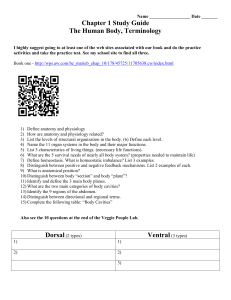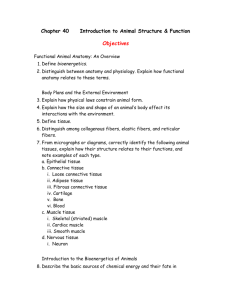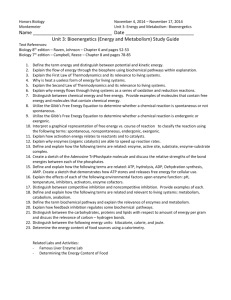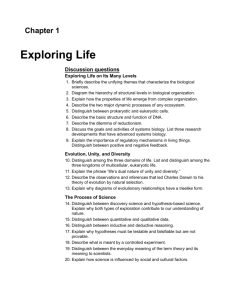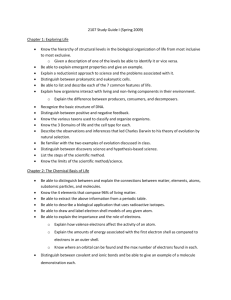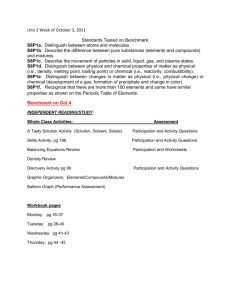AP Biology - Al Young Studios
advertisement
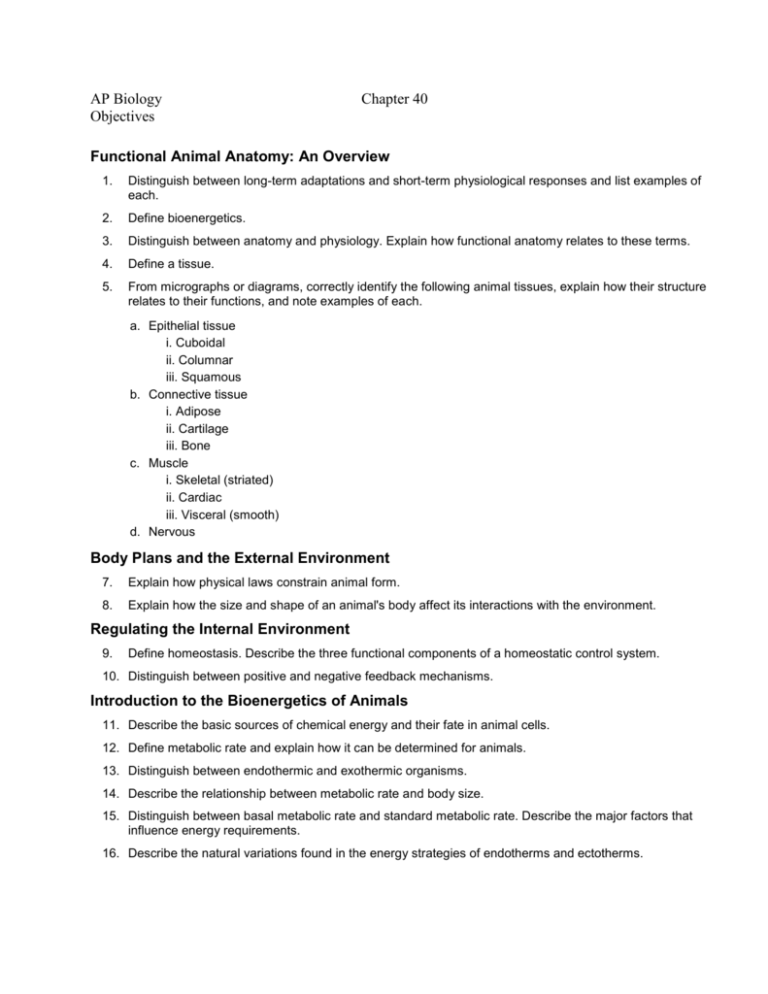
AP Biology Objectives Chapter 40 Functional Animal Anatomy: An Overview 1. Distinguish between long-term adaptations and short-term physiological responses and list examples of each. 2. Define bioenergetics. 3. Distinguish between anatomy and physiology. Explain how functional anatomy relates to these terms. 4. Define a tissue. 5. From micrographs or diagrams, correctly identify the following animal tissues, explain how their structure relates to their functions, and note examples of each. a. Epithelial tissue i. Cuboidal ii. Columnar iii. Squamous b. Connective tissue i. Adipose ii. Cartilage iii. Bone c. Muscle i. Skeletal (striated) ii. Cardiac iii. Visceral (smooth) d. Nervous Body Plans and the External Environment 7. Explain how physical laws constrain animal form. 8. Explain how the size and shape of an animal's body affect its interactions with the environment. Regulating the Internal Environment 9. Define homeostasis. Describe the three functional components of a homeostatic control system. 10. Distinguish between positive and negative feedback mechanisms. Introduction to the Bioenergetics of Animals 11. Describe the basic sources of chemical energy and their fate in animal cells. 12. Define metabolic rate and explain how it can be determined for animals. 13. Distinguish between endothermic and exothermic organisms. 14. Describe the relationship between metabolic rate and body size. 15. Distinguish between basal metabolic rate and standard metabolic rate. Describe the major factors that influence energy requirements. 16. Describe the natural variations found in the energy strategies of endotherms and ectotherms.
